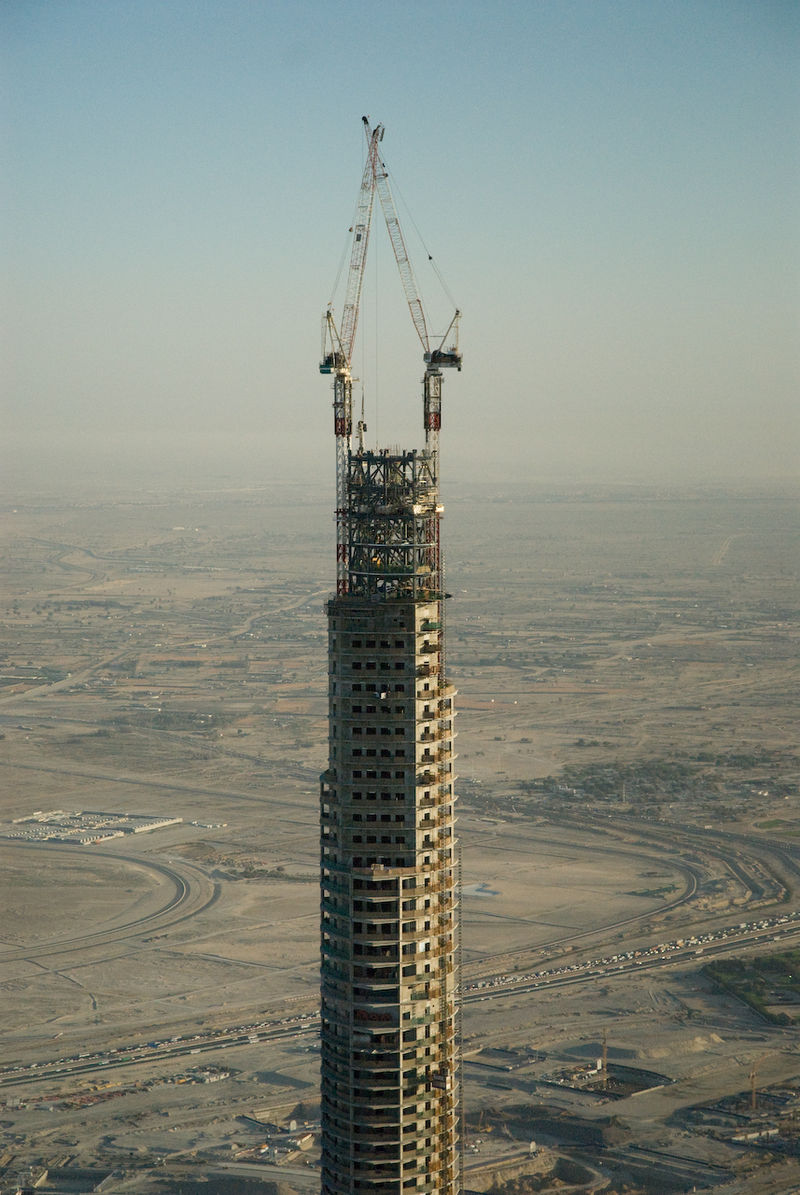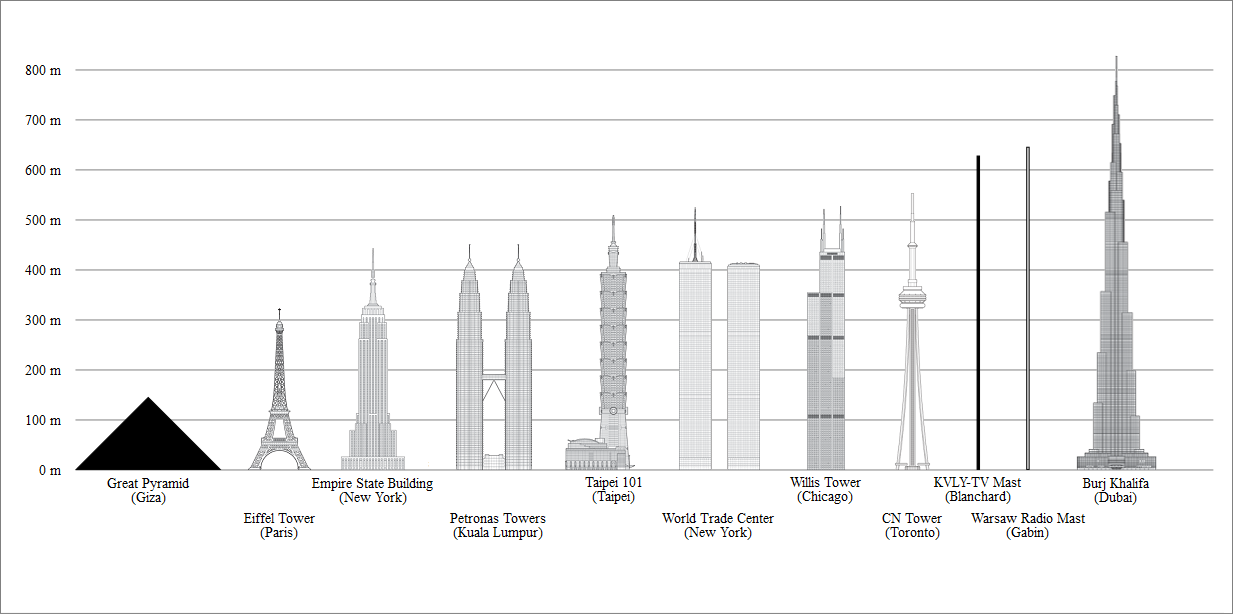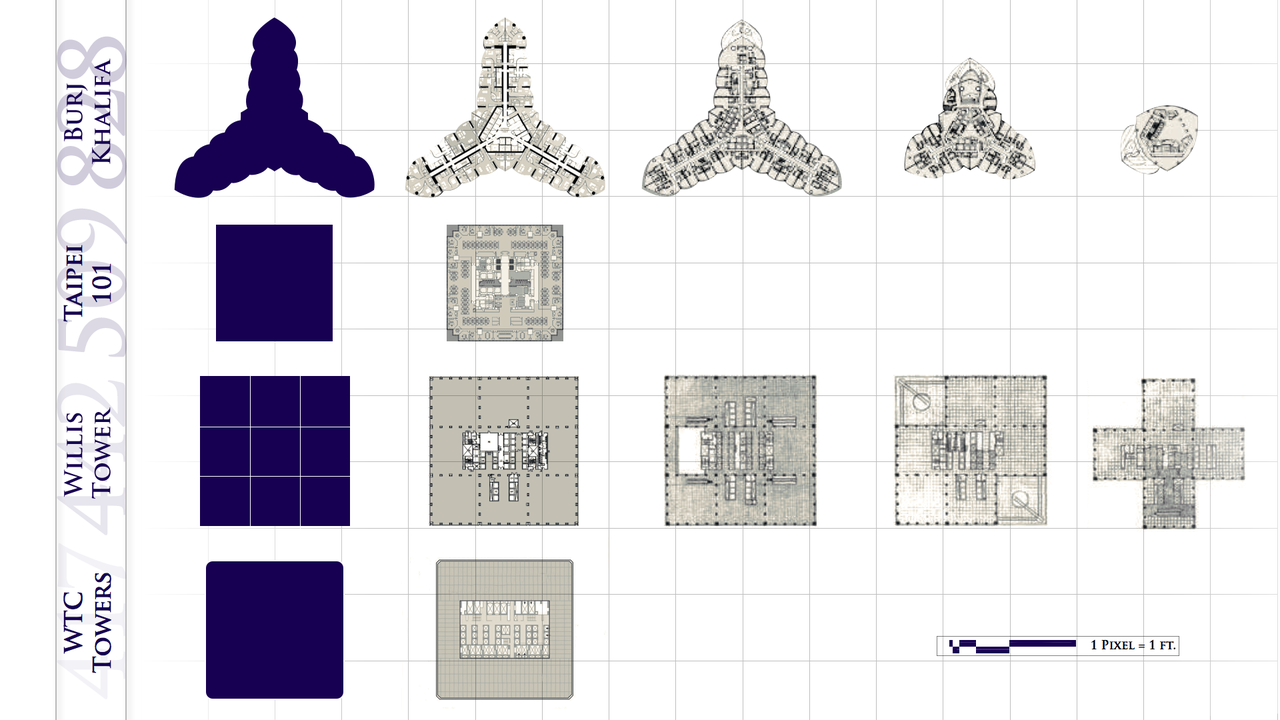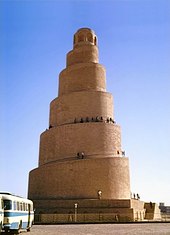Construction of the Burj Khalifa began in 2004, with the exterior completed five years later in 2009. The primary structure is reinforced concrete and some of the structural steel for the building originated from the Palace of the Republic in East Berlin, the former East German parliament.The building was opened in 2010 as part of a new development called Downtown Dubai. It is designed to be the centrepiece of large-scale, mixed-use development. The decision to construct the building is based on the government's decision to diversify from an oil-based economy, and for Dubai to gain international recognition. The building was originally named Burj Dubai but was renamed in honour of the ruler of Abu Dhabi and president of the United Arab Emirates, Khalifa bin Zayed Al Nahyan;Abu Dhabi and the UAE government lent Dubai money to pay its debts. The building broke numerous height records, including its designation as the tallest building in the world.
Burj Khalifa was designed by Adrian Smith, of Skidmore, Owings & Merrill, whose firm designed the Willis Tower and One World Trade Center. Hyder Consulting was chosen to be the supervising engineer with NORR Group Consultants International Limited chosen to supervise the architecture of the project. The design is derived from the Islamic architecture of the region, such as in the Great Mosque of Samarra. The Y-shaped tripartite floor geometry is designed to optimize residential and hotel space. A buttressed central core and wings are used to support the height of the building. Although this design was derived from Tower Palace III, the Burj Khalifa's central core houses all vertical transportation with the exception of egress stairs within each of the wings.The structure also features a cladding system which is designed to withstand Dubai's hot summer temperatures. It contains a total of 57 elevators and 8 escalators.
At a certain point in the architectural and engineering process, the original Emaar developers experienced financial problems, and required more money and economic funding. Sheikh Khalifa, the ruler of the United Arab Emirates, granted monetary aid and funding, hence the changing of the name to "Burj Khalifa". The concept of profitability derived from building high density developments and malls around the landmark has proven successful. Its surrounding malls, hotels and condominiums in Downtown Dubai have generated the most revenue from the project as a whole, while the Burj Khalifa itself made little or no profit.
Critical reception to Burj Khalifa has been generally positive, and the building has received many awards. However, there were numerous complaints concerning migrant workers from South Asia who were the primary building labour force. These centered on low wages and the practice of confiscating passports until duties were complete.Frequent suicides committed by expatriate employees who worked at the structure were reported in 2011.
Development
Construction began in January 2004, with the exterior of the structure completed on 1 October 2009. The building officially opened on 4 January 2010 and is part of the 2 km2 (490-acre) Downtown Dubai development at the 'First Interchange' along Sheikh Zayed Road, near Dubai's main business district. The tower's architecture and engineering were performed by Skidmore, Owings & Merrill of Chicago, with Adrian Smith as chief architect, and Bill Baker as chief structural engineer.The primary contractor was Samsung C&T of South Korea.

Conception
Burj Khalifa was designed to be the centerpiece of a large-scale, mixed-use development to include 30,000 homes, nine hotels (including The Address Downtown Dubai), 3 hectares (7.4 acres) of parkland, at least 19 residential skyscrapers, the Dubai Mall, and the 12-hectare (30-acre) artificial Burj Khalifa Lake. The decision to build Burj Khalifa was reportedly based on the government's decision to diversify from an oil-based economy to one that is service and tourism based. According to officials, it was necessary for projects like Burj Khalifa to be built in order to garner more international recognition, and hence investment. "He (Sheikh Mohammed bin Rashid Al Maktoum) wanted to put Dubai on the map with something really sensational," said Jacqui Josephson, a tourism and VIP delegations executive at Nakheel Properties. The tower was known as Burj Dubai ("Dubai Tower") until its official opening in January 2010.It was renamed in honour of the ruler of Abu Dhabi, Khalifa bin Zayed Al Nahyan; Abu Dhabi and the federal government of UAE lent Dubai tens of billions of US dollars so that Dubai could pay its debts – Dubai borrowed at least $80 billion for construction projects.In the 2000s, Dubai started diversifying its economy but it suffered from an economic crisis in 2007–2010, leaving large-scale projects already in construction abandoned.
Records
The Burj Khalifa set several world records, including:
- Tallest existing structure: 829.8 m (2,722 ft) (previously KVLY-TV mast – 628.8 m or 2,063 ft)
- Tallest structure ever built: 829.8 m (2,722 ft) (previously Warsaw radio mast – 646.38 m or 2,121 ft)
- Tallest freestanding structure: 829.8 m (2,722 ft) (previously CN Tower – 553.3 m or 1,815 ft)
- Tallest skyscraper (to top of spire): 828 m (2,717 ft) (previously Taipei 101 – 509.2 m or 1,671 ft)
- Tallest skyscraper to top of antenna: 829.8 m (2,722 ft) (previously the Willis (formerly Sears) Tower – 527 m or 1,729 ft)
- Building with most floors: 163 (previously World Trade Center – 110)
- World's highest elevator installation (situated inside a rod at the very top of the building)
- World's longest travel distance elevators: 504 m (1,654 ft)
- Highest vertical concrete pumping (for a building): 606 m (1,988 ft)
- World's tallest structure that includes residential space
- World's highest installation of an aluminium and glass façade: 512 m (1,680 ft)
- World's highest nightclub: 144th floor
- World's highest restaurant (At.mosphere): 122nd floor at 442 m (1,450 ft) (previously 360, at a height of 350 m (1,148 ft) in CN Tower)
- World's highest New Year display of fireworks.
- World's largest light and sound show staged on a single building.
History of height increases

There are unconfirmed reports of several planned height increases since its inception. Originally proposed as a virtual clone of the 560 m (1,837 ft) Grollo Tower proposal for Melbourne, Australia's Docklands waterfront development, the tower was redesigned by Skidmore, Owings and Merrill. Marshall Strabala, a Skidmore, Owings and Merrill architect who worked on the project until 2006, said in late 2008 that Burj Khalifa was designed to be 808 m (2,651 ft) tall.
The architect who designed it, Adrian Smith, felt that the uppermost section of the building did not culminate elegantly with the rest of the structure, so he sought and received approval to increase its height.It was stated that this change did not add any floors, which fit with Smith's attempts to make the crown more slender. The building opened on 4 January 2010.
Architecture and design

The tower was designed by Skidmore, Owings and Merrill (SOM), which also designed the Willis Tower (formerly the Sears Tower) in Chicago and the One World Trade Center in New York City. Burj Khalifa uses the bundled tube design of the Willis Tower, invented by Fazlur Rahman Khan.Due to its tubular system, proportionally only half the amount of steel was used in the construction, compared to the Empire State Building.Khan's contributions to the design of tall buildings have had a profound impact on architecture and engineering. It would be difficult to find any worldwide practices in the design of tall buildings that have not been directly or indirectly influenced by his work.The design is reminiscent of Frank Lloyd Wright's vision for The Illinois, a mile-high skyscraper designed for Chicago, as well as Chicago's Lake Point Tower. When Adrian Smith was conceiving the project at SOM, he looked out his office window toward Lake Point Tower's curved three wing layout and thought, "There's the prototype".According to Strabala, Burj Khalifa was designed based on the 73 floor Tower Palace Three, an all-residential building in Seoul. In its early planning, Burj Khalifa was intended to be entirely residential.
Subsequent to the original design by Skidmore, Owings and Merrill, Emaar Properties chose Hyder Consulting to be the supervising engineer and NORR Group Consultants International Ltd to supervise the architecture of the project.Hyder was selected for their expertise in structural and MEP (mechanical, electrical and plumbing) engineering.Hyder Consulting's role was to supervise construction, certify the architect's design, and be the engineer and architect of record to the UAE authorities.NORR's role was the supervision of all architectural components including on-site supervision during construction and design of a 6-story addition to the office annex building for architectural documentation. NORR was also responsible for the architectural integration drawings for the Armani Hotel included in the Tower. Emaar Properties also engaged GHD, an international multidisciplinary consulting firm, to act as an independent verification and testing authority for concrete and steelwork.
The design is derived from Islamic architecture.As the tower rises from the flat desert base, there are 27 setbacks in a spiral pattern, decreasing the cross section of the tower as it rises and creating convenient outdoor terraces. These setbacks are arranged and aligned in a way that minimizes vibration wind loading from eddy currents and vortices.At the top, the central core emerges and is sculpted to form a finishing spire. At its tallest point, the tower sways a total of 1.5 m (4.9 ft).

The spire of Burj Khalifa is composed of more than 4,000 tonnes (4,400 short tons; 3,900 long tons) of structural steel. The central pinnacle pipe weighs 350 tonnes (390 short tons; 340 long tons) and has a height of 200 m (660 ft). The spire also houses communications equipment. This 244-metre spire is widely considered vanity height, since very little of its space is usable. Without the spire, Burj Khalifa would be 585 meters tall. This was reported in a Council on Tall Buildings and Urban Habitat study, which notes that the empty spire "could be a skyscraper on its own". Such a skyscraper, if located in Europe, would be the 11th tallest building on that continent.
In 2009 architects announced that more than 1,000 pieces of art would adorn the interiors of Burj Khalifa, while the residential lobby of Burj Khalifa would display the work of Jaume Plensa.
The cladding system consists of 142,000 m2 (1,528,000 sq ft) of more than 26,000 reflective glass panels and aluminium and textured stainless steel spandrel panels with vertical tubular fins.The architectural glass provides solar and thermal performance as well as an anti-glare shield for the intense desert sun, extreme desert temperatures and strong winds. The glass covers more than 174,000 m2 (1,870,000 sq ft) in area.The Burj's typical curtain wall panels measure 4'6" wide by 10'8" high and weigh about 800 pounds each, with wider panels near the building's edges and taller ones near the top.
The exterior temperature at the top of the building is thought to be 6 °C (11 °F) cooler than at its base.
A 304-room Armani Hotel, the first of four by Armani, occupies 15 of the lower 39 floors. The hotel was supposed to open on 18 March 2010,but after several delays, it finally opened to the public on 27 April 2010. The corporate suites and offices were also supposed to open from March onwards,yet the hotel and observation deck remained the only parts of the building which were open in April 2010.
The sky lobbies on the 43rd and 76th floors house swimming pools. Floors 20 through 108 have 900 private residential apartments (which, according to the developer, sold out within eight hours of being on the market). An outdoor zero-entry swimming pool is located on the 76th floor of the tower. Corporate offices and suites fill most of the remaining floors, except for the 122nd, 123rd and 124th, where the At.mosphere restaurant, sky lobby and an indoor and outdoor observation deck are located respectively. In January 2010, it was planned that Burj Khalifa would receive its first residents from February 2010.
The building has 57 elevators and 8 escalators. The elevators have a capacity of 12 to 14 people per cabin, the fastest rising and descending at up to 10 m/s (33 ft/s) for double-deck elevators. However, the world's fastest single-deck elevator still belongs to Taipei 101 at 16.83 m/s (55.2 ft/s). Engineers had considered installing the world's first triple-deck elevators, but the final design called for double-deck elevators. The double-deck elevators are equipped with entertainment features such as LCD displays to serve visitors during their travel to the observation deck.The building has 2,909 stairs from the ground floor to the 160th floor.
Plumbing systems
The Burj Khalifa's water system supplies an average of 946,000 L (250,000 U.S. gal) of water per day through 100 km (62 mi) of pipes.An additional 213 km (132 mi) of piping serves the fire emergency system, and 34 km (21 mi) supplies chilled water for the air conditioning system.
Air conditioning
The air conditioning system draws air from the upper floors where the air is cooler and cleaner than on the ground.At peak cooling times, the tower's cooling is 46 MW (62,000 hp), equivalent to that provided by 13,000 short tons (26,000,000 lb; 12,000,000 kg) of melting ice in one day. Water is collected via a condensate collection system and is used to irrigate the nearby park.
Window cleaning
To wash the 24,348 windows, totaling 120,000 m2 (1,290,000 sq ft) of glass, the building has three horizontal tracks which each holding a 1,500 kg (3,300 lb) bucket machine. Above level 109, and up to tier 27, traditional cradles from davits are used. The top of the building is cleaned by a crew that uses ropes to descend from the top to gain access.Under normal conditions, when all building maintenance units are operational, it takes 36 workers three to four months to clean the entire exterior.
Unmanned machines clean the top 27 additional tiers and the glass spire. The cleaning system was developed in Melbourne, Australia, by CoxGomyl, a manufacturer of building maintenance units,at a cost of A$8 million.



You must be logged in to post a comment.